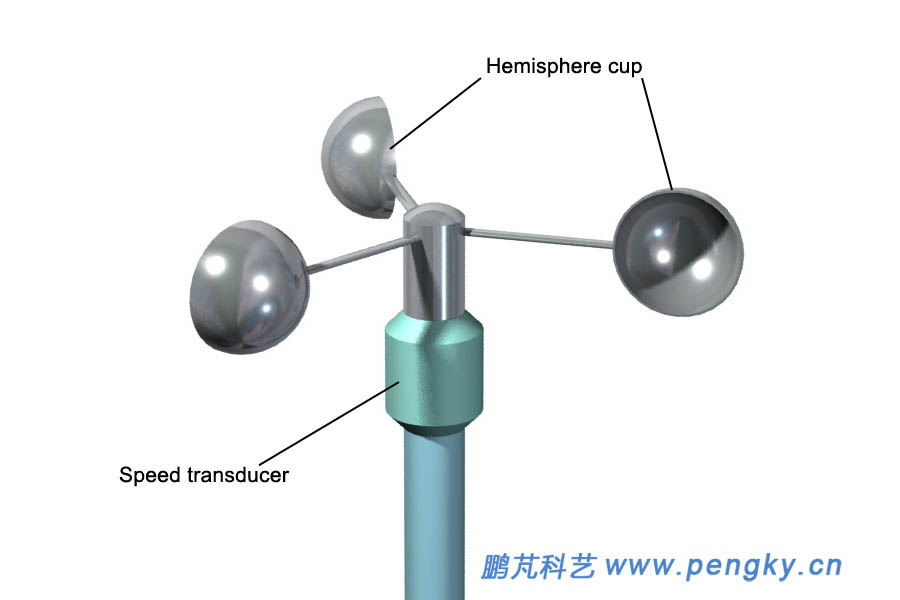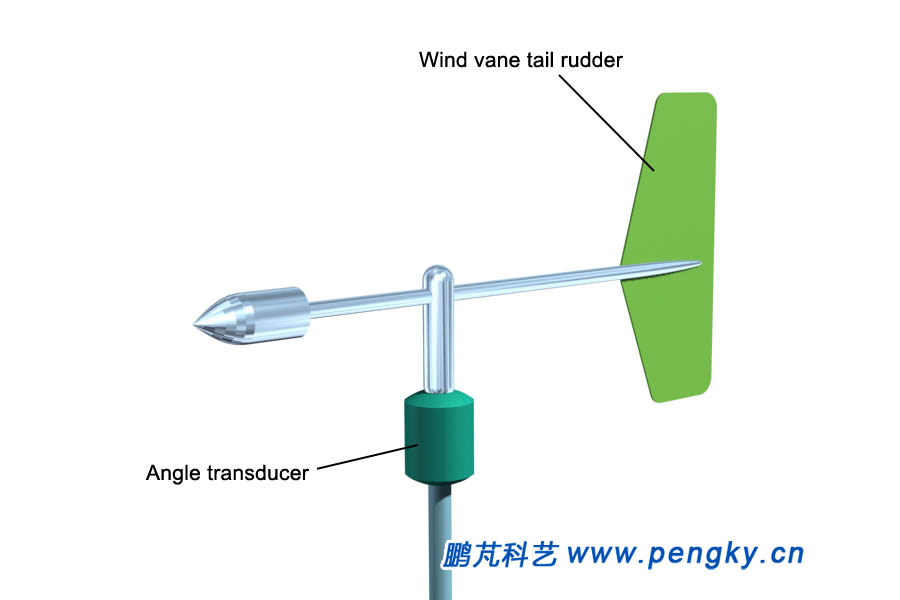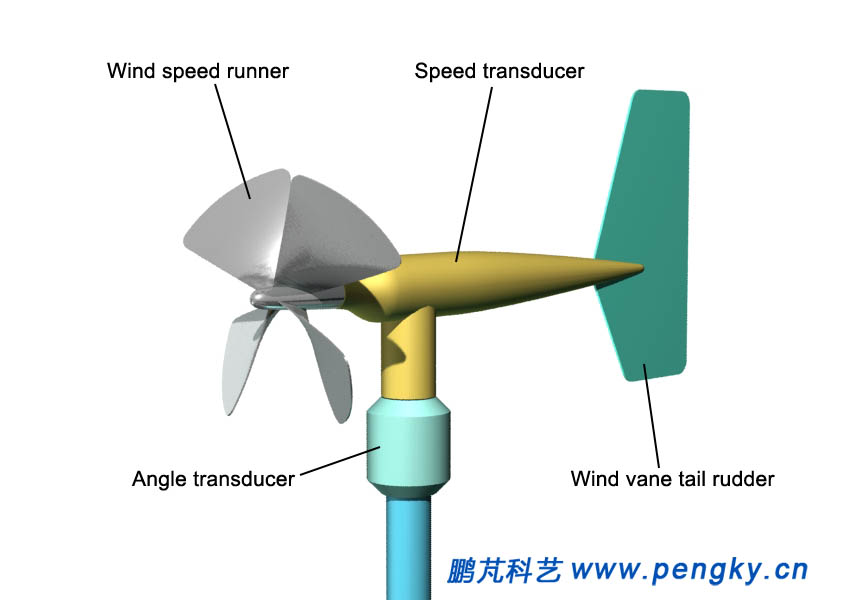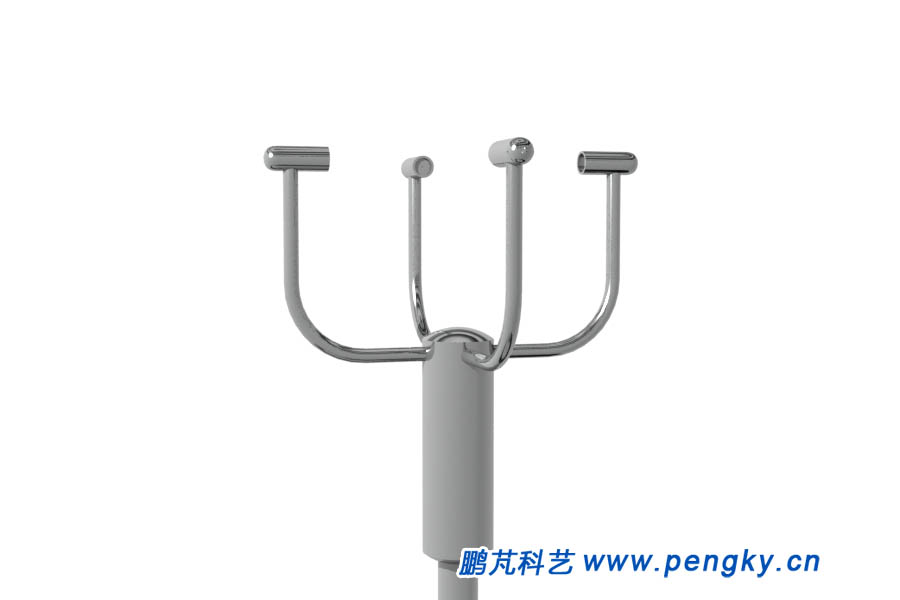
Wind Measurements |
Wind is a natural phenomenon caused by air flow, and wind mainly refers to the horizontal flow of air. Solar radiant heat is the main cause of air pressure changes. Typical winds include sea and land wind, valley wind, monsoon, and trade wind. The main parameters of the wind are magnitude and direction. |
| Mechanical anemometer |
The wind speed measuring instrument is also called the wind speed transducer. The simplest and most common wind speed measurement is the three-cup anemometer. The three wind cups rotate due to the difference in resistance. The speed is high when the wind is strong and the speed transducer in the instrument turns the speed of the cup into electricity signal output. Figure 1 is the outline of the three-cup anemometer. For the principle, see Wind Cup Resistance Difference Wind Turbine courseware. |
 |
| Figure 1 Three-cup anemometer-wind speed transducer |
The simplest and most common wind direction measurement is the wind vane, also known as the wind direction transducer. The principle is self-evident. The angle it points to is converted from an angle transducer within the instrument to an electrical signal output. Figure 2 is the outline of the wind vane. |
 |
| Figure2 Wind vane-wind direction transducer |
| Figure 3 is an instrument that can measure wind speed and wind direction at the same time. It is also called wind speed and direction transducer. There is a blade for measuring the rotation speed in front of the instrument. The blade grows with the increase of wind speed, and there are fins that swing with the wind behind the instrument. The instrument has a speed transducer and an angle transducer to convert the wind speed and the wind direction into electrical signal outputs, respectively. Figure 3 is an outline drawing of the instrument. |
 |
| Figure 3 Wind speed and direction transducer |
| The mechanical anemometer has the simple structure and low price; the disadvantage is that there are rotating parts, there is abrasion wear loss, and it is easy to be worn by sand wind, and the freezing rain and snow will affect the operation and need regular maintenance. |
| Ultrasonic wind speed and direction anemometer |
| Ultrasonic wind speed and direction anemometer, also called ultrasonic wind speed and direction transducer, has a variety of measurement and calculation methods, among which the propagation time difference method is simple and used more. The time difference method measures the wind speed by the propagation speed of the ultrasonic wave in the air. The tail wind propagation speed is fast, the adverse propagation speed is slow, and the two-way speed is the same when the wind speed is zero. Figure 4 is an ultrasonic wind speed and direction anemometer with four ultrasonic probes on the top. Each probe can transmit and receive ultrasonic waves. The opposite two probes are one group. Each set of probes can measure the wind speed in the opposite direction, and the combination of the two sets of probes can measure the specific wind speed and direction. |
 |
| Figure 4 Ultrasonic transducer of wind speed and direction |
Ultrasonic wind speed and direction instrument has the biggest advantage of no mechanical wear. The disadvantage is that the size is larger. Rain, snow, frost, fog and dust will affect the measurement and increase the output error. The probe heating technology prevents the effects of sleet on the transducer and is suitable for use in severe weather conditions. Large wind turbine is equipped with wind direction and wind speed measurement transducer. The wind direction transducer provides real-time signals to the wind turbine yaw controller. The controller drives the yaw motor to ensure the wind turbine accurately against the wind. The wind speed transducer provides wind speed signals to the wind turbine controller. The pitch angle is adjusted according to the wind speed and load to make the wind turbine run at an optimal state. |
| Laser wind radar |
| In recent years, laser wind radar technology has made rapid progress and began to be installed in wind turbine. See the Doppler wind lidar courseware for introduction. |
| Back to Previous Page |
